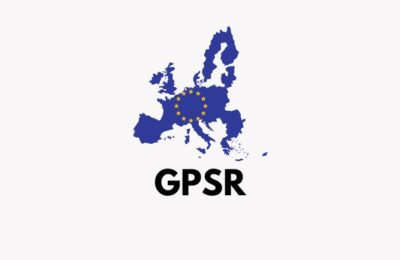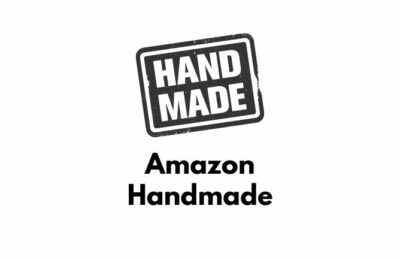This is the first step to becoming a part of Amazon’s brand registry, explained in this article. Registering a trademark in the European Union (EU) can safeguard your brand identity, prevent counterfeiting, and enhance your business reputation. This comprehensive guide will provide e-commerce merchants with detailed steps on how to register a trademark in the EU, ensuring you can protect your valuable brand assets effectively.
Understanding Trademarks
A trademark is a sign capable of distinguishing the goods or services of one enterprise from those of other enterprises. Trademarks can include words, logos, colors, shapes, sounds, and even smells. Registering a trademark gives you the exclusive right to use that mark in connection with the goods or services for which it is registered, and it can be a powerful tool in building and protecting your brand.
Benefits of Registering a Trademark in the EU
- Exclusive Rights: You gain exclusive rights to use the trademark across all EU member states.
- Legal Protection: It provides legal protection against unauthorized use or imitation of your trademark.
- Brand Recognition: Enhances your brand’s credibility and reputation.
- Asset Value: A registered trademark can be a valuable intangible asset, increasing the overall value of your business.
- Ease of Expansion: Facilitates easier business expansion within the EU.
Steps to Register a Trademark in the EU
1. Conduct a Trademark Search
Before applying, it is crucial to conduct a thorough search to ensure that your desired trademark is not already in use. This can prevent potential legal disputes and application rejections. The European Union Intellectual Property Office (EUIPO) provides an online database called eSearch plus, where you can perform this search.
2. Choose the Right Trademark Class
Trademarks are categorized into different classes based on the type of goods or services they represent. The Nice Classification system is used for this purpose. Identifying the correct class or classes for your trademark is essential to ensure comprehensive protection.
3. Prepare Your Application
You need to prepare the necessary documentation for your application, including:
- Details of the Applicant: Name, address, and nationality of the individual or company applying for the trademark.
- Representation of the Trademark: A clear image or description of the trademark.
- List of Goods and Services: Detailed description of the goods or services associated with the trademark.
4. File Your Application
You can file your trademark application online through the EUIPO website. The process involves creating an account, filling out the application form, and paying the required fees. As of 2024, the basic fee for one class is €850, with an additional fee for each extra class.
5. Examination by EUIPO
Once your application is submitted, the EUIPO will examine it for compliance with formal requirements and ensure there are no grounds for refusal. This examination includes:
- Formal Examination: Checking if the application form is correctly filled out and the fees are paid.
- Substantive Examination: Ensuring the trademark meets all the legal requirements and is not descriptive, deceptive, or generic.
6. Publication and Opposition Period
If the application passes the examination stage, it will be published in the EU Trade Marks Bulletin. This initiates a three-month opposition period during which third parties can file objections to your trademark registration.
7. Registration and Issuance of Certificate
If no oppositions are filed, or if any oppositions are resolved in your favor, your trademark will be registered. The EUIPO will issue a registration certificate, granting you exclusive rights to the trademark for ten years, with the option to renew indefinitely.
Maintaining Your Trademark
Once your trademark is registered, it is essential to monitor and enforce your rights to maintain its validity and strength. This includes:
- Renewal: Trademarks must be renewed every ten years.
- Monitoring: Regularly monitor for potential infringements and take legal action if necessary.
- Use in Commerce: Ensure continuous use of the trademark in commerce to avoid cancellation due to non-use.
How Having a Registered Trademark Can Help You Sell on Amazon
For e-commerce merchants, selling on Amazon can be a game-changer, opening up access to millions of potential customers worldwide. However, the platform’s competitive nature and the prevalence of counterfeit products make it essential to have strong brand protection. Having a registered trademark provides numerous advantages when selling on Amazon:
1. Eligibility for Amazon Brand Registry
The Amazon Brand Registry is a program designed to help brand owners protect their intellectual property and create an accurate and trusted experience for customers on Amazon. To enroll in the Brand Registry, you must have a registered trademark. Benefits of the Brand Registry include:
- Enhanced Brand Protection: Tools to help you find and report violations, such as counterfeit listings or unauthorized sellers.
- Improved Product Listing Control: Ability to create and manage product detail pages, ensuring accurate representation of your brand.
- Access to Advanced Marketing Tools: Enhanced brand content, A+ content, and Sponsored Brand ads to improve your product listings and visibility.
2. Protection Against Counterfeits
Counterfeit products can damage your brand’s reputation and erode customer trust. A registered trademark allows you to take legal action against counterfeiters and unauthorized sellers on Amazon. The Brand Registry program provides proactive brand protection, including automated protections that use your trademarks to remove suspected infringing or inaccurate content.
3. Increased Customer Trust
Having a registered trademark signifies that your brand is legitimate and trustworthy. Customers are more likely to purchase products from a brand they recognize and trust, which can lead to increased sales and customer loyalty. The Brand Registry badge on your listings further reinforces your brand’s authenticity.
4. Access to Amazon Transparency Program
The Amazon Transparency Program helps combat counterfeit products by providing unique codes that are applied to your products. Customers can scan these codes to verify the authenticity of their purchase. Enrollment in this program requires a registered trademark and offers an additional layer of protection for your brand.
5. Eligibility for Enhanced Brand Content (EBC)
Enhanced Brand Content (EBC) allows you to add rich content, including images and text, to your product descriptions. This can help improve conversion rates by providing customers with a better understanding of your product features and benefits. EBC is only available to sellers with a registered trademark through the Brand Registry.
6. Improved Reporting Tools
Amazon Brand Registry provides access to powerful reporting tools that allow you to monitor your brand’s performance and identify potential infringements. These tools include:
- Search and Report Tools: Quickly find and report suspected infringing content.
- Global Search: Monitor your brand across all Amazon marketplaces.
- Bulk Reporting: Streamline the process of reporting multiple infringing listings.
Conclusion
Registering a trademark in the EU is a strategic move for e-commerce merchants looking to protect their brand and expand their business. By following the steps outlined in this guide, you can navigate the trademark registration process with confidence, ensuring your brand enjoys robust legal protection and enhanced market presence. Additionally, having a registered trademark unlocks numerous benefits on Amazon, helping you protect your brand, enhance your listings, and build customer trust. Taking proactive measures to secure your trademark can provide long-term benefits, safeguarding your brand’s identity and contributing to your business’s success in the competitive e-commerce landscape.



